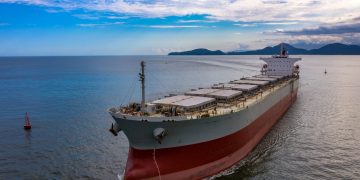The American P&I Club has issued new case studies and other relevant information taking into account best practices in the prevention of shipboard machinery failures. In spite of major improvements in design and quality control over the years, significant failures still occur. The first case study is being presented below.
Statistically around 40% of claims on H&M Underwriters are for machinery damages with corresponding monetary values much higher as a proportion. Consequential claims on P&I insurance can also be even= more costly and then ensuing long debates on “seaworthiness” can create huge legal expenses. Through quality control measures, latent defects1 in components whilst not totally eradicated have become very much less prevalent. Similarly, as investigation into cases has shown, whilst marine engines are still largely hand built, quality assurance procedures have virtually eradicated errors in construction.
But against such progress, man’s inhumanity towards machine continues virtually unabated and when taking a fresh look at this and past research into failures and causation, some of which is now decades old, the one common denominator that still prevails today is the human element.
In spite of the major advances in design and materials made, investigation into failures of the nature of that highlighted in our alerts will show that in particular the level of competency and the knowledge base of engineers at sea has fallen and fallen significantly. The industry collectively faces a conundrum; no amount of design excellence and material selection in the construction of sophisticated marine machinery will amount to actual progress with reliability when faced with the downward trend of the level of engineering ability at sea. Design and construction excellence and operator skills have been on steeply divergent paths. The latest engines, whilst intentionally simple in general construction terms are now becoming much more sophisticated in terms of the peripheral necessities of electronic monitoring and electronic control of fuel injection, exhaust valve and cylinder lubrication timing etc., brought on by the recent advent of the “camshaft-less” engine concept.
New trends in fuels for ships for example, driven largely by environmental considerations will require yet more sophistication in engine rooms as far as the main machinery and the supporting auxiliary plant is concerned.
But whatever advances are made, unless marine machinery can be made totally operator free – at best presently doubtful, the human element will continue to play a major role in failures.
Explore more by reading the case study below
Source & Image credit: American P&I Club


































































